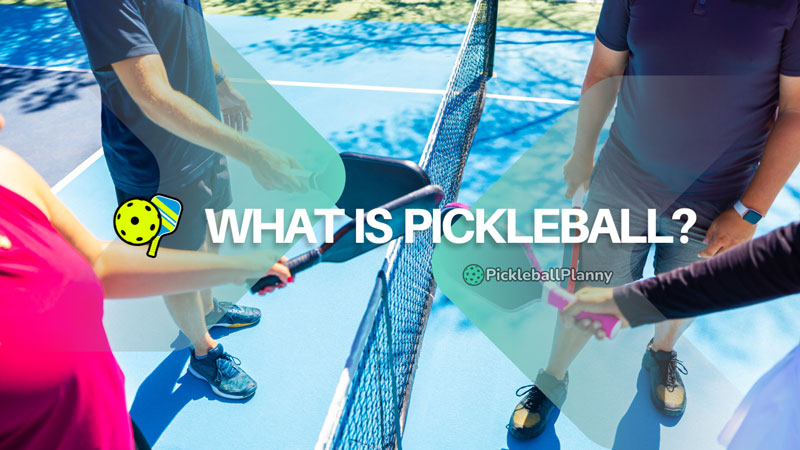Have you noticed a new sport taking the world by storm? It’s called pickleball, and it’s been gaining fans left and right. Maybe you’ve seen some folks playing at the park or heard your friends chatting about how much fun it is. So, you might be asking, ‘What’s pickleball all about?’ Well, you’re in the right place! In this article, Pickleballplanny explores what is pickleball, pickleball’s origins, how to play it, health benefits, popularity, tips for beginners, etiquette, tournaments and events.
What is Pickleball?
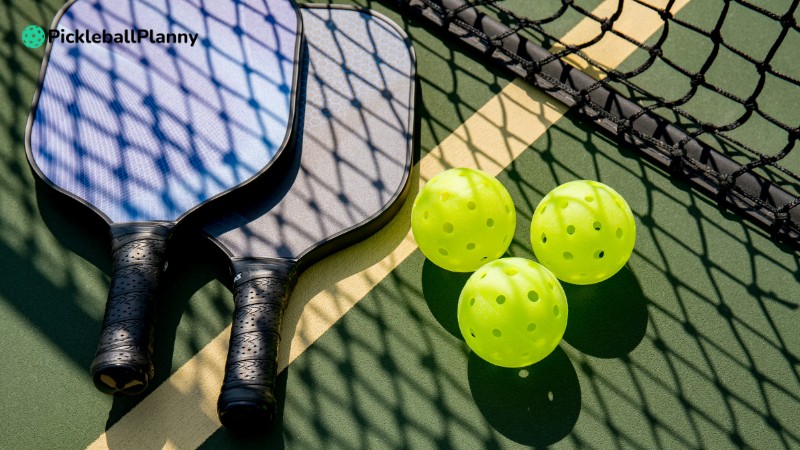
Pickleball is a paddle sport that combines elements of tennis, badminton, and ping pong. It is played on a court with the dimensions of a badminton court and a net similar to a tennis net. Players use solid paddles made of wood or composite materials to hit a perforated polymer ball over the net.
Pickleball has experienced a surge in popularity in recent years, attracting players of all ages and backgrounds. Its appeal lies in its simplicity, accessibility, and social aspect. Pickleball is particularly popular among seniors due to its low-impact nature and opportunities for socialization.
Origins of Pickleball
When was pickleball invented? Who invented pickleball? Pickleball was invented in the mid-1960s by Joel Pritchard, a congressman from Washington state, along with his friend Bill Bell and their families. The game was created to provide entertainment for their children during the summer.
They improvised the equipment using ping pong paddles, a badminton net lowered to a height suitable for their backyard, and a wiffle ball. The name “pickleball” is said to have originated from the Pritchard family dog, Pickles, who would chase after stray balls.
Health benefits of Pickleball
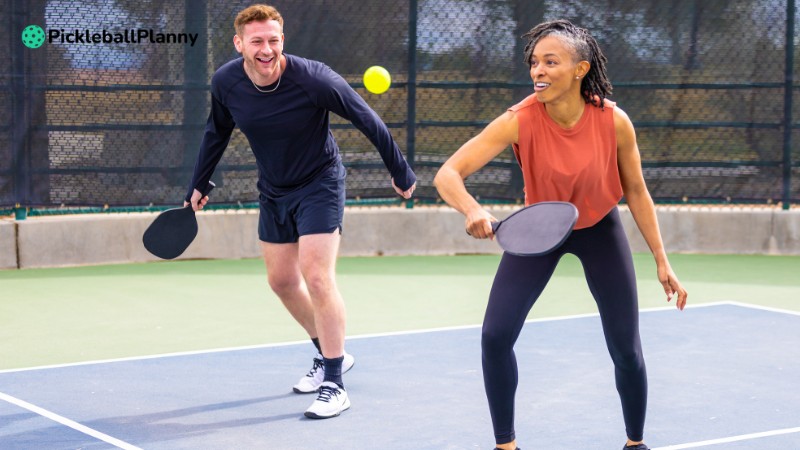
Pickleball offers numerous health benefits, including cardiovascular exercise, improved coordination and balance, and social interaction. The game provides a moderate aerobic workout, helping to improve heart health and endurance. Additionally, the quick movements and hand-eye coordination required in pickleball can enhance overall coordination and balance.
Why is it called pickleball
There are two main theories about why pickleball is called pickleball:
- Pickles from crew: The wife of one of the inventors of pickleball, Joan Pritchard, said she named it after the pickle boats in crew racing. These were boats with crews made up of leftover oarsmen from other boats, and were often seen as less competitive.
- Pritchard’s dog Pickles: Another theory is that the game was named after the Pritchard’s dog, Pickles, who would chase the ball around during the game.
Why is pickleball so popular
Pickleball’s growth isn’t just a fluke; several factors contribute to its widespread appeal:
- Accessibility: Suitable for all ages, it’s a sport that grandparents and grandchildren can enjoy together.
- Social Nature: Doubles games promote camaraderie, making it a delightful way to bond and make new friends.
- Health Benefits: Playing pickleball offers cardiovascular exercise, enhancing fitness and well-being.
While its roots are American, pickleball has found enthusiasts across the globe. Nations from Canada to India have embraced the sport, with international tournaments promoting a sense of global community and friendly competition.
Refer to information about Is Pickleball an Olympic Sport?
Basic rules of the Pickleball game
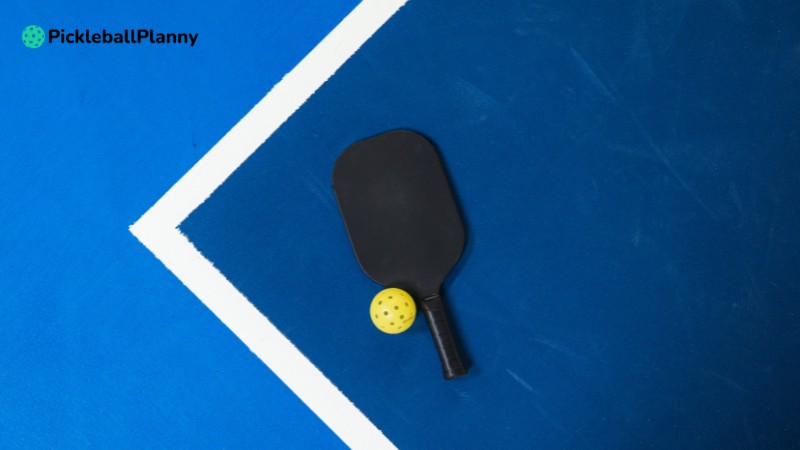
Pickleball blends elements of tennis, badminton, and table tennis. Played on a badminton-sized court with a modified tennis net, the game can be enjoyed in singles or doubles format. The objective? Score points by making the ball land in the opponent’s court without allowing them a successful return.
Key rules to remember:
- Service is underhand and must be done diagonally.
- Points are scored by the serving side only and occur when the opponent faults.
- The game ends when one side reaches 11 points and is at least 2 points ahead.
Equipment Used in Pickleball
Pickleball doesn’t demand a vast array of equipment. Basically, all you need to get started is:
- Paddles: Initially made of wood, modern paddles are often crafted from lightweight composite materials.
- Ball: Resembling a wiffle ball, it’s designed with unique perforations suited for outdoor and indoor play.
- Court: Akin to a badminton court, it has specific zones like the ‘non-volley zone’ or ‘kitchen’ where special rules apply.
How do you play Pickleball
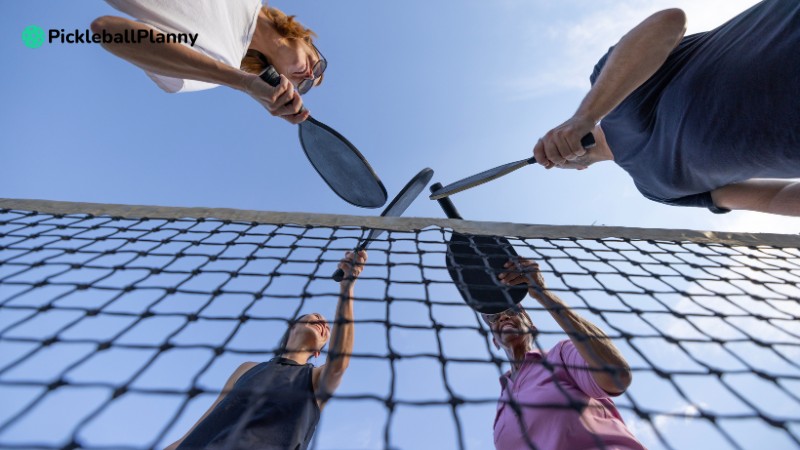
Pickleball can be played indoors or outdoors on a court with similar dimensions to a badminton court. The game is typically played as doubles, although singles play is also common.
Players serve diagonally and must allow the ball to bounce once on each side of the net before volleys are allowed. The first side to score 11 points with a lead of at least two points wins the game.
As with any sport, pickleball has its own set of etiquette rules that players should adhere to. This includes showing good sportsmanship, respecting opponents and teammates, and taking care of equipment and the court. Following these guidelines ensures a positive and enjoyable experience for all players.
Guide tips for beginners to play Pickleball
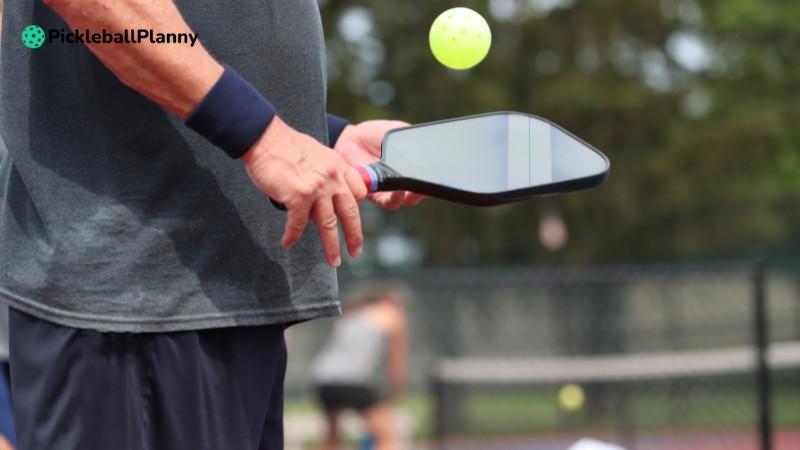
For beginners, mastering the basics of pickleball is key to enjoying the game. Proper grip and stance, as well as understanding basic strokes and strategies, are essential for success on the court. Practicing with experienced players and taking lessons can help accelerate the learning process.
Master the Grip
Before stepping onto the court, familiarize yourself with the proper grip for holding the pickleball paddle. The most common grip is the continental grip, where the paddle is held similar to how you would hold a hammer. This grip allows for versatility in your shots and helps maintain control over the ball.
Find Your Stance
Your stance is fundamental to your performance in pickleball. Stand with your feet shoulder-width apart, knees slightly bent, and weight evenly distributed on both feet. This balanced stance allows for quick movement in any direction and ensures stability while executing shots.
Learn Basic Strokes
Start by mastering the basic strokes of pickleball, including the forehand and backhand shots. Practice hitting the ball with controlled power and accuracy, focusing on keeping your strokes consistent and smooth. As you become more comfortable with the basics, you can gradually incorporate advanced techniques into your game.
Understand Court Positioning
Understanding where to position yourself on the court is crucial for effective gameplay. As a beginner, focus on maintaining your position in the “ready” position, which is slightly behind the non-volley zone line (kitchen line). This allows you to react quickly to incoming shots while staying close to the net for volleys.
Stay Positive and Have Fun
Above all, remember to enjoy the game and have fun on the court. Embrace challenges as opportunities for growth, and celebrate your progress along the way. Stay positive, encourage your fellow players, and cherish the camaraderie that pickleball fosters among its community.
By following these tips and dedicating yourself to practice and improvement, you’ll soon find yourself becoming a confident and skilled pickleball player. So grab your paddle, hit the court, and let the fun begin!
Pickleball tournaments and events
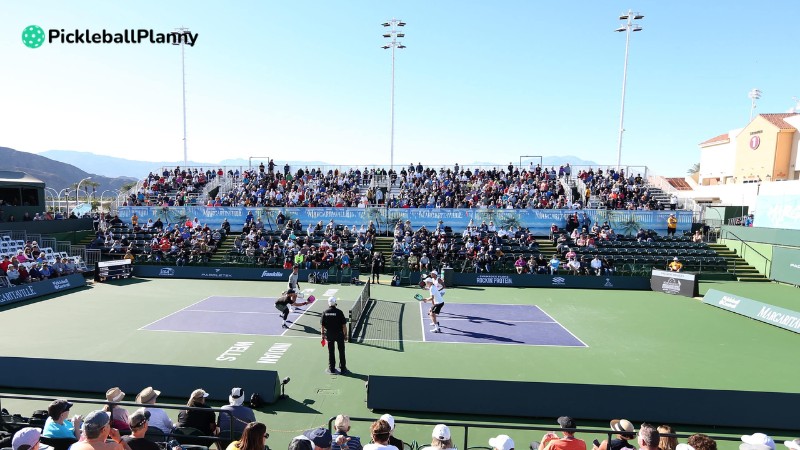
Pickleball tournaments and events are held regularly at local, national, and international levels. These competitions attract players of all skill levels, from beginners to seasoned professionals. In addition to tournaments, many communities host pickleball socials and events to promote the sport and foster a sense of camaraderie among players.
While pickleball shares similarities with other paddle sports like tennis and badminton, it also has distinct differences that set it apart. Compared to tennis, pickleball has a smaller court and a slower-paced game, making it more accessible to players of all ages and abilities. Additionally, pickleball offers a unique blend of strategy and skill that appeals to a wide range of players.
Conclusion
Pickleball, with its intriguing mix of familiar racquet sports, offers an accessible and fun-filled experience for players of all ages. Its rapid growth speaks volumes about its appeal, and for those yet to try, there’s no better time than now to dive into the vibrant world of pickleball.
In conclusion, pickleball is a versatile and enjoyable paddle sport that offers numerous health benefits and opportunities for social interaction. Whether you’re a beginner or a seasoned player, pickleball provides a fun and rewarding experience for players of all ages and skill levels.
FAQs about Pickleball
Why is it called pickleball?
There are two main theories about why pickleball is called pickleball. The wife of one of the inventors of pickleball, Joan Pritchard, said she named it after the pickle boats in crew racing. Another theory is that the game was named after the Pritchard’s dog, Pickles, who would chase the ball around during the game
When was pickleball invented?
Pickleball was invented in the mid-1960s by Joel Pritchard, a congressman from Washington state, along with his friend Bill Bell and their families.
How many players are needed for a game of pickleball?
Pickleball can be played with either two or four players. Doubles is the most popular way to play pickleball, with two teams of two players each. You can also play pickleball with just two players, one on each side of the net. The rules are mostly the same, but with a few adjustments for the smaller court.
How big is a pickleball court?
A pickleball court is similar in size to a badminton court. A pickleball court is 20 feet wide and 44 feet long for doubles play, and 20 feet wide and 22 feet long for singles play.

